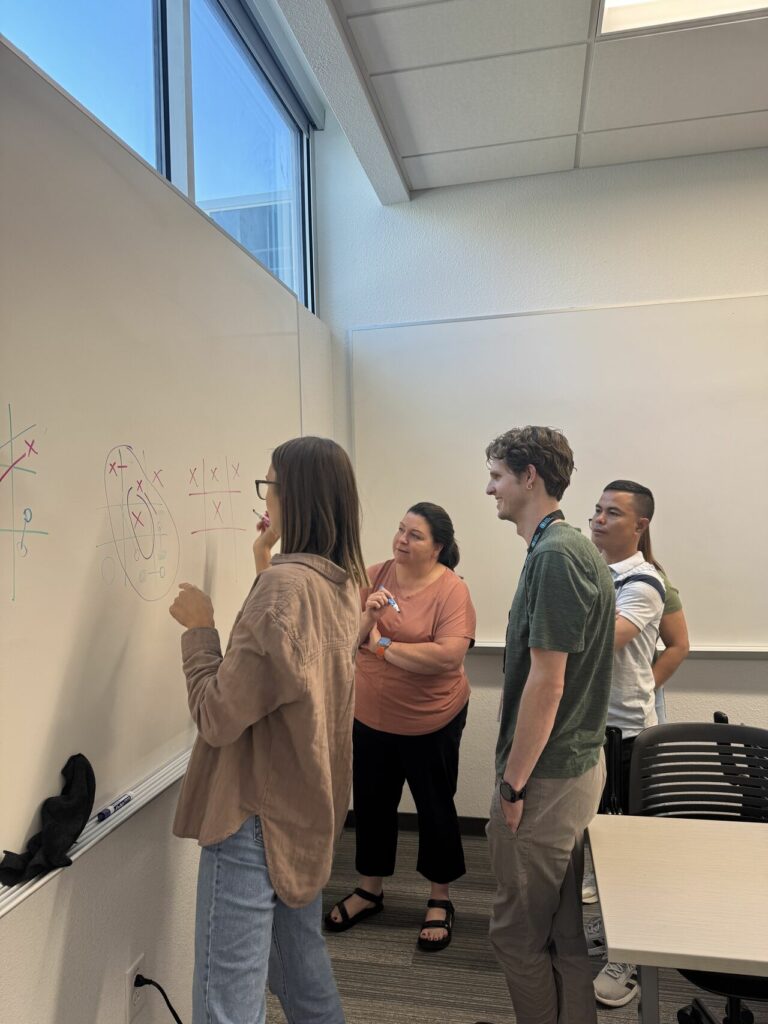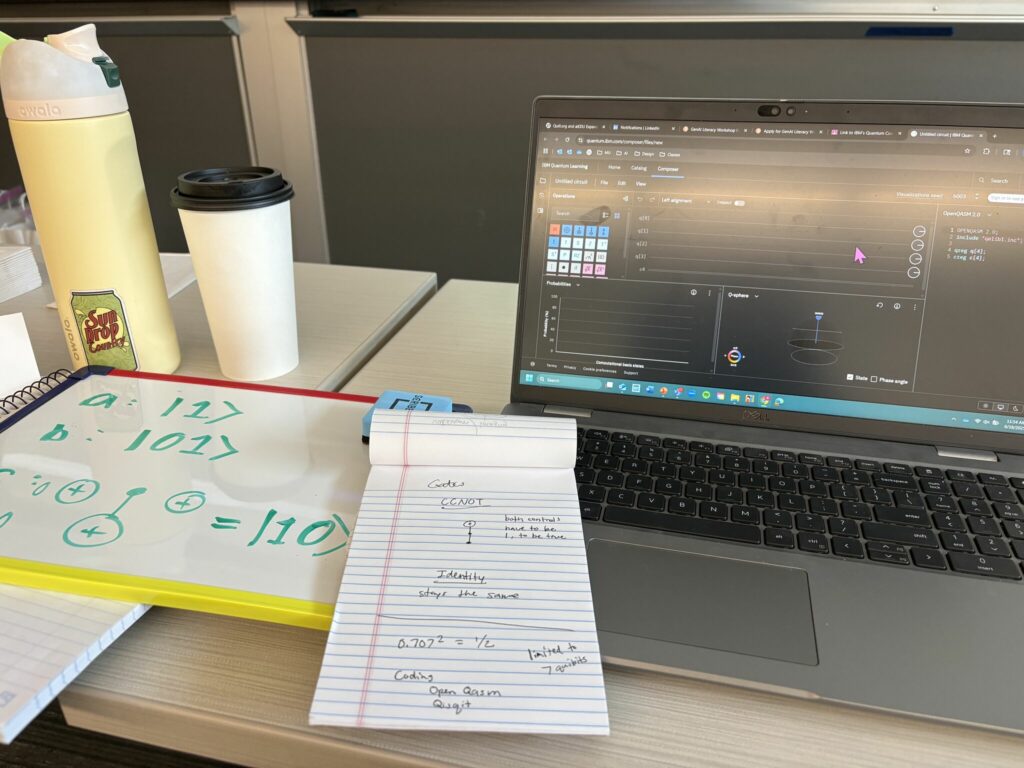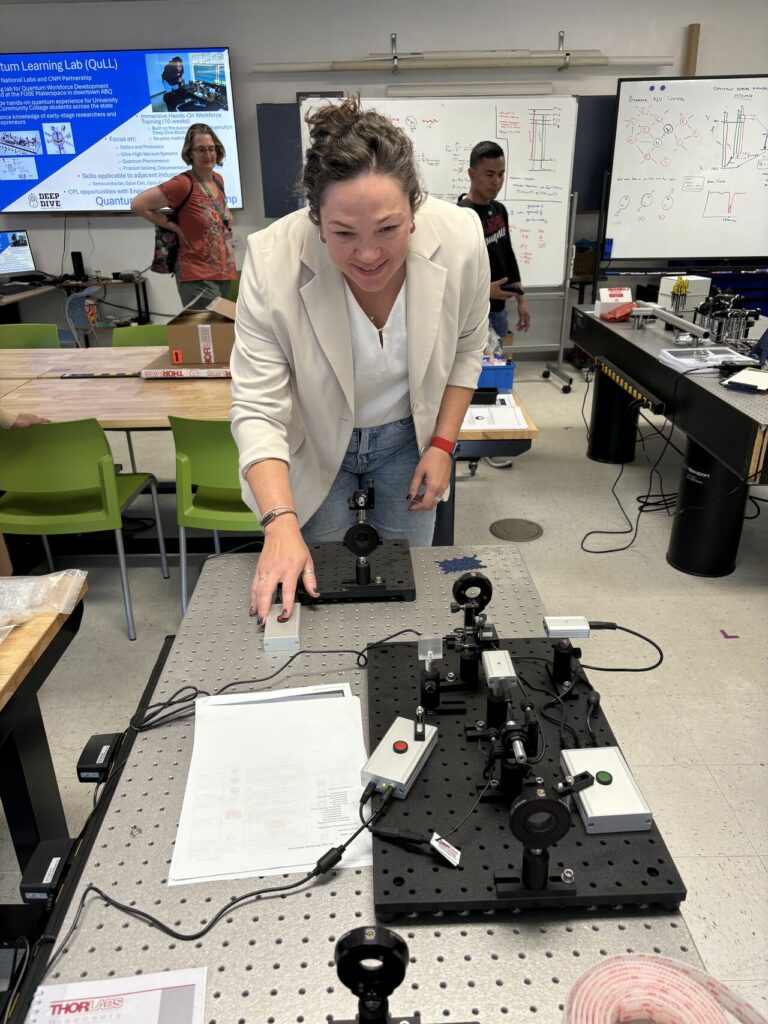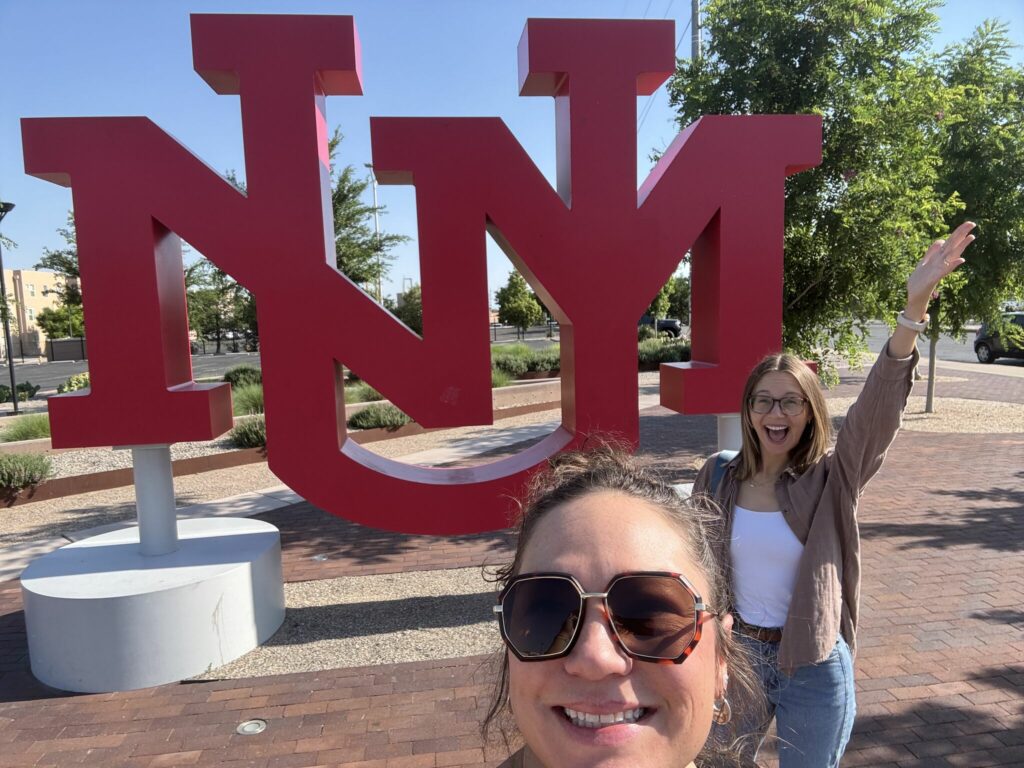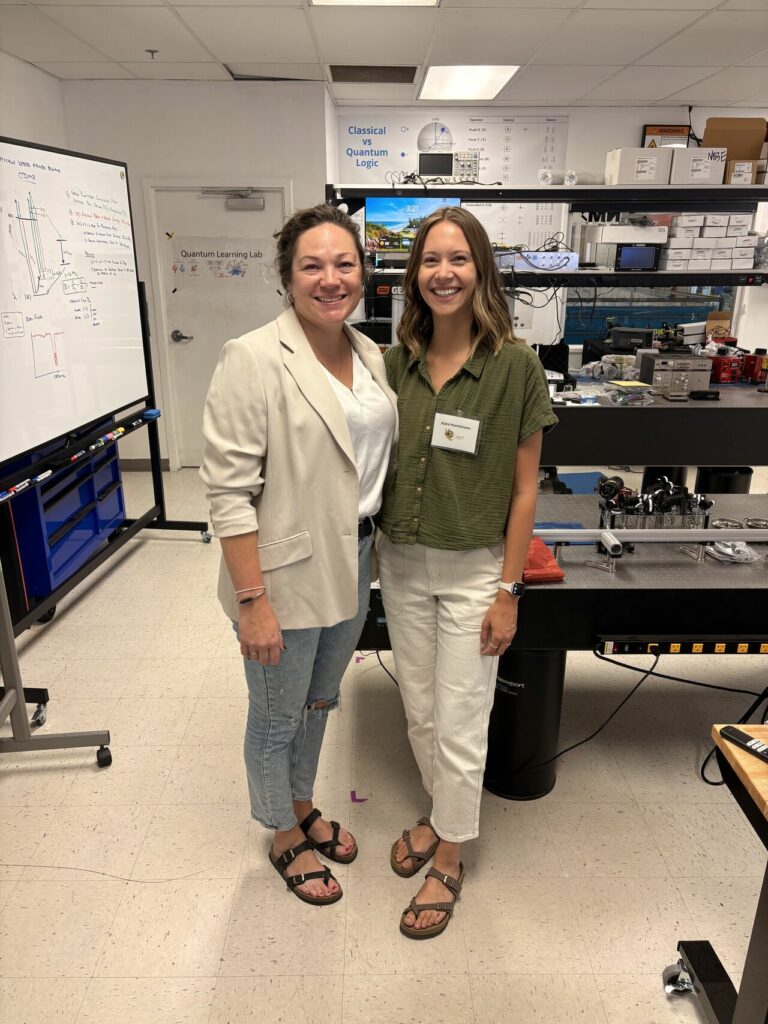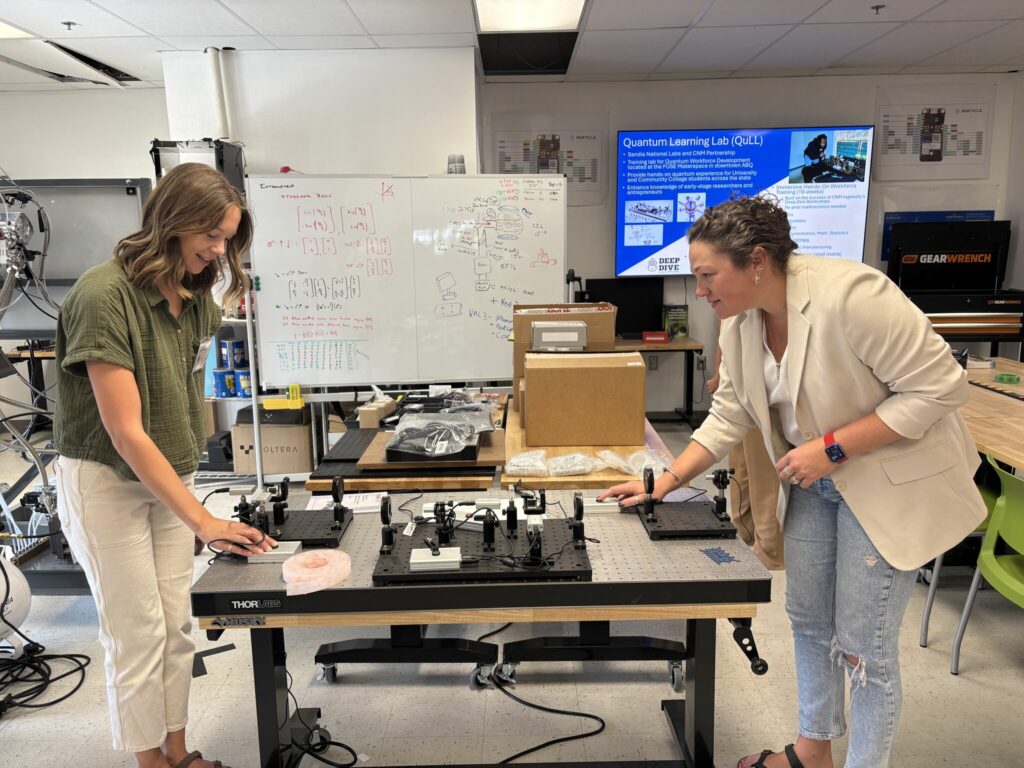
Last month, I had the chance to attend Quantum, Computing, Math, and Physics Camp (QCaMP) at the University of New Mexico with Megan Gretzinger, Executive Director of Technology at Lee’s Summit R-7 School District. The camp, co-hosted by Sandia National Laboratories and Berkeley Lab, brought together educators from around the country—both in person and over Zoom—to explore how quantum computing concepts can be introduced in K–12 classrooms.
Each day of QCaMP was full of hands-on labs, approachable quantum lectures, and thoughtful conversations. We explored core ideas like qubits, Hadamard gates, superposition, and entanglement while constantly returning to one big question: how do we make these abstract topics meaningful for students?
One of the biggest takeaways was that you don’t need to be a physicist or have a room full of expensive equipment to start teaching quantum thinking. Activities using coins, polarised sunglasses, and even just a game of tag helped explain quantum ideas in ways that made sense. These simple lessons showed us that quantum education is possible using what many teachers already have.
It was also inspiring to connect with educators from across the country and hear how they’re beginning to integrate quantum into their teaching. Some are adding it to computer science classes, while others are weaving quantum concepts into math, science, art, or even storytelling. The goal isn’t to turn every student into a quantum researcher—it’s to spark curiosity, creativity, and new ways of thinking.
If you’re curious about bringing quantum concepts into your own classroom or library, stay tuned!
